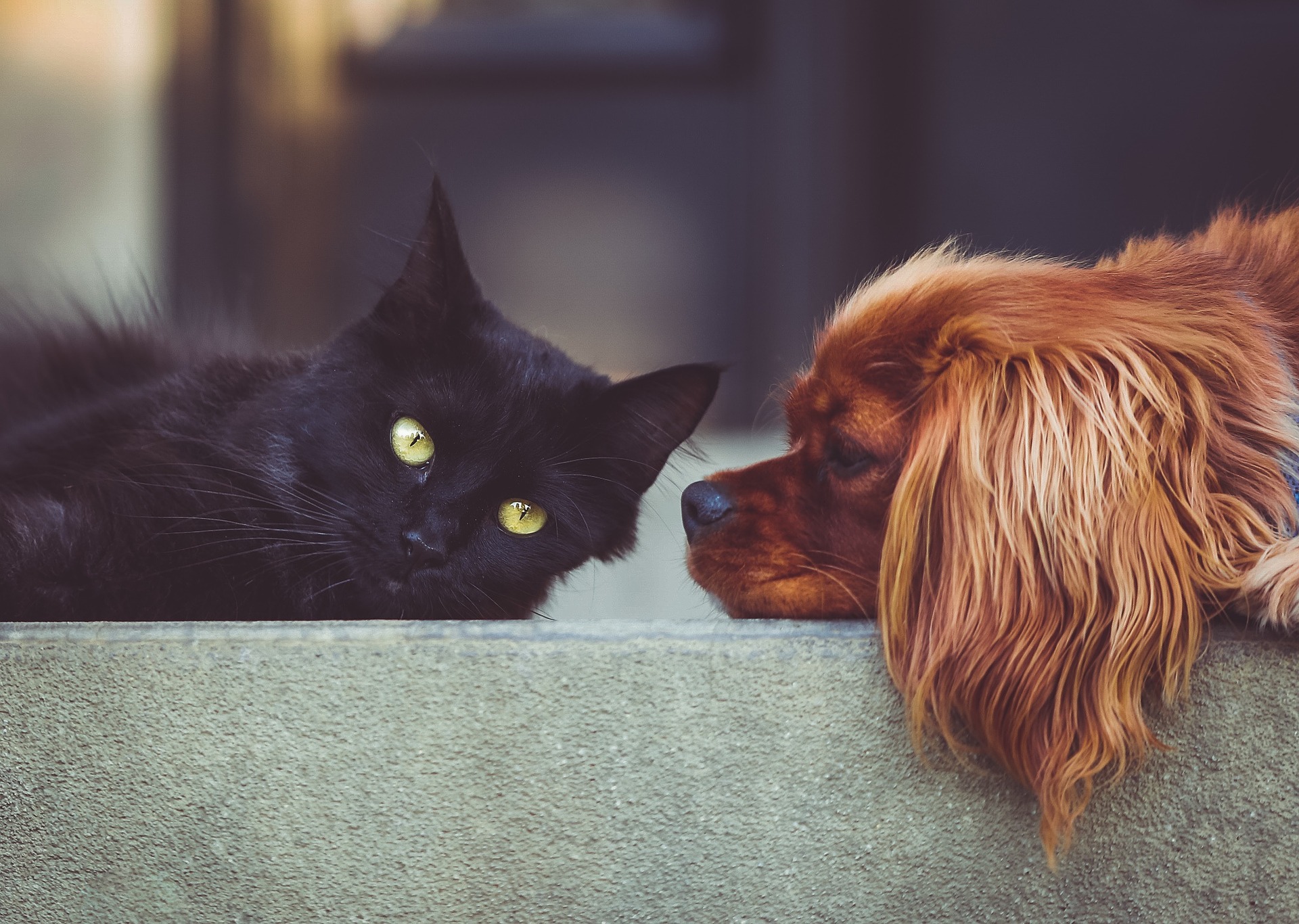You will often see the friendly arguments – dog people vs. cat people sparring about which makes the better pet. Of course, here at Gulf Coast K9 Dog Training, we may have a slight preference – although we do love all furry animals! Pet relationships can be a bit complex, especially if you are adding a new furry friend to your family mix
While dogs and cats each have their own personalities, there really is some truth to the natural aversion the two seem to have to one another. However, just like introducing your older dog to a new puppy, approach the introduction of any new pet into the family with patience. By doing so you are likely to be rewarded with pets who tolerate each other at worst – and may even end up as best friends.
Adapting to New Pet Relationships
There really is no reason why dogs and cats can’t have healthy interactions. For all the silly cartoons about them being natural enemies, the truth is that you can train these two animals to be friends. All it takes is some time and patience.
Regardless of which animal was in the household first, you can follow these tips to help them two animals to warm up to one another. (Incidentally, this works with a second dog as well!)
- Take it Slowly: Animals can be territorial, and the current pet may feel possessive about his home and his people. You should always realize that the resident pet is probably going to have a fearful, stressed or aggressive reaction to a new animal. Don’t just let w new pet loose in the home. Separate the two, keeping a closed door between them. In this way they can sniff, push their paw underneath the door – or even hiss or growl – without hurting the other animal. Allow them to become aware of each others presence, and each others scents.
- Monitor the Introduction: Whenever you put the two animals together in the initial stages, be sure to stay close and mediate the meeting. you may want to keep dogs in their leash, and cats in a carrier. The main objective is to allow them to get to know one another, with neither animal feeling stressed or afraid. Obviously, you don’t want any real injury to occur (scratching or biting). Never leave two new animals alone until you are sure that they can get along.
- Reward Them for Friendliness: Sometimes you have to help pet relationships along, with tasty bribes. Teach your animals that the desired behavior is them getting along and playing nice, and reward them with their favorite treats. You can teach a dog or cat to associate time together with tasty snacks or their favorite toy – just don’t expect them to share, or allow one to steal the other’s toy.
You can almost always train a dog and a cat to tolerate one another, even if they never become best friends. Cats and dogs can have very different temperaments, and your stand-offish feline may not enjoy your retriever’s playfulness. Still, with patience and persistence, you should be able to create a peaceful coexistence. And if you are lucky, they may become pals for life.
Should you find that no matter what you do, the two can’t seem to get along – you may need to enlist professional help. The experts at Gulf Coast K9 Dog Training can teach your dog to ignore distractions, even that annoying cat (and lets ‘face it, the cat will likely ignore him). Let us help with this or any other canine behavioral issue you may encounter.





